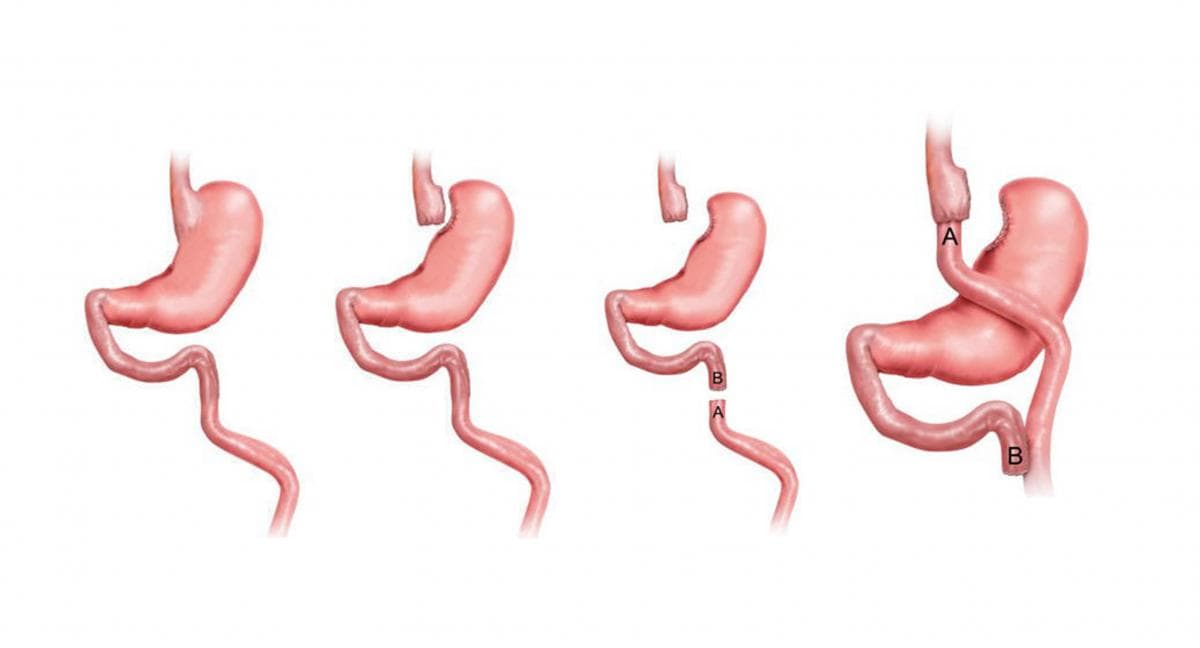Gastric Bypass
Process
A Gastric Bypass creates a small stomach pouch, with a content of approximately 75CC, using surgical staples. This anterior stomach is closed up entirely and separated from the rest of the stomach, resulting in a small stomach pouch. This will stop you from eating large amounts and make you feel full quicker (restriction). A thin intestinal limb (or alimentary limb) measuring 150 cm is then connected to the stomach pouch, so food from the oesophagus enters the small intestine directly, via the stomach pouch. Only 150 cm lower, the small intestine, where the gastric juices can be found (biliary limb) is connected to this intestinal limb. Since food is only digested when in contact with these gastric juices, less time is left for digestion and absorption, hence not all calories you take in are in fact being absorbed by the body. This is called malabsorption.
